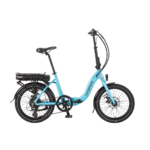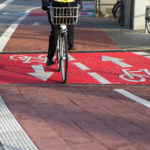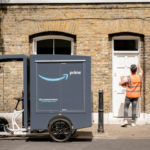Battery pre-charge circuit
- Thread starter Fordulike
- Start date
In Li-ion the precharge works by supplying 10% (or is it 20%?) of C (the rated charge current) until the voltage reaches a certain point and then goes into the CC-CV (Constant Current - Constant Voltage) cycles. It allows a Li-ion cell to recovery from a low charge state (to some degree at least).I understand why a battery pre-charge circuit may be needed in some set-ups, but could someone please explain how it works.
Do they need any sort of priming, or can you just connect the controller straight to the battery?
There is a really good video series on youtube that explains it in a lot of detail if you are interested. The EEV blog.
D
Deleted member 4366
Guest
Are you asking about pre-charging the battery or pre-charging the controller?
You can connect the controller directly to the battery, which is what most people do with 36v and 250w controllers.You get a bit of a spark as you connect because the big capacitors in the controller take a big current for a very short time while they charge up. These sparks will burn the connectors and they'll eventually need to be replaced. This effect is much worse with bigger controllers and higher voltages. Mine would make you jump if you didn't know it was coming, so some people use a pre-charge resistor. You connect the negative wire first and then instead of connecting the positive directly, you connect via a resistor so that the capacitors can only charge up slowly and take a much smaller current. The time to charge and the current depends on how many ohms in the resistor. When the capacitors are charged, you can then connect the positive without burning the contacts.
You can connect the controller directly to the battery, which is what most people do with 36v and 250w controllers.You get a bit of a spark as you connect because the big capacitors in the controller take a big current for a very short time while they charge up. These sparks will burn the connectors and they'll eventually need to be replaced. This effect is much worse with bigger controllers and higher voltages. Mine would make you jump if you didn't know it was coming, so some people use a pre-charge resistor. You connect the negative wire first and then instead of connecting the positive directly, you connect via a resistor so that the capacitors can only charge up slowly and take a much smaller current. The time to charge and the current depends on how many ohms in the resistor. When the capacitors are charged, you can then connect the positive without burning the contacts.
Yes, thats my understanding of it in the context of ebikes. Some discussion over on ES if you do a search. One easy way to implement is to wire the resistor across a battery isolation switch (on/off switch) bridging the connectors in-line with the + wire so when you plug the battery lead in the spark doesn't occur...let the main input cap charge for a few seconds then turn on as normal.
Sorry z0mb13e, I should have explained more clearly, but thanks for the interesting information.
I did mean in relation to the spark created when connecting the controller to the battery, which can be strong enough to trash the connectors.
In particular, Cell Man's A123, 52v 11.5Ah triangle battery.
These are capable of incredibly high currents, so I guess a pre-charge circuit is a necessity.
I think I read that the battery comes with the usual pos and neg for output, but also an extra wire.
Has anyone used his batteries before with the extra pre-charge wire?
I did mean in relation to the spark created when connecting the controller to the battery, which can be strong enough to trash the connectors.
In particular, Cell Man's A123, 52v 11.5Ah triangle battery.
These are capable of incredibly high currents, so I guess a pre-charge circuit is a necessity.
I think I read that the battery comes with the usual pos and neg for output, but also an extra wire.
Has anyone used his batteries before with the extra pre-charge wire?
No worries. I wasn't aware that this was even an issue! Certainly something to bear in mind should I replace the Whisper battery with a non standard one.Sorry z0mb13e, I should have explained more clearly, but thanks for the interesting information.
I did mean in relation to the spark created when connecting the controller to the battery, which can be strong enough to trash the connectors.
In particular, Cell Man's A123, 52v 11.5Ah triangle battery.
These are capable of incredibly high currents, so I guess a pre-charge circuit is a necessity.
I think I read that the battery comes with the usual pos and neg for output, but also an extra wire.
Has anyone used his batteries before with the extra pre-charge wire?
High Current Arming Switch w/ Spark Arrestor with Photographs and circuit...
High Current Arming Switch w/ Spark Arrestor... - RC Groups
Dave
High Current Arming Switch w/ Spark Arrestor... - RC Groups
Dave
Related Articles
-
 MTF Enterprises announces acquisition of EMU Electric Bikes
MTF Enterprises announces acquisition of EMU Electric Bikes- Started by: Pedelecs
-
 Wisper 806T folding bike wins Which? ‘Best Buy’
Wisper 806T folding bike wins Which? ‘Best Buy’- Started by: Pedelecs
-
 Sustrans calls for protected cycle lanes
Sustrans calls for protected cycle lanes- Started by: Pedelecs
-
 Amazon launch their first UK e-cargo micromobility hub
Amazon launch their first UK e-cargo micromobility hub- Started by: Pedelecs


